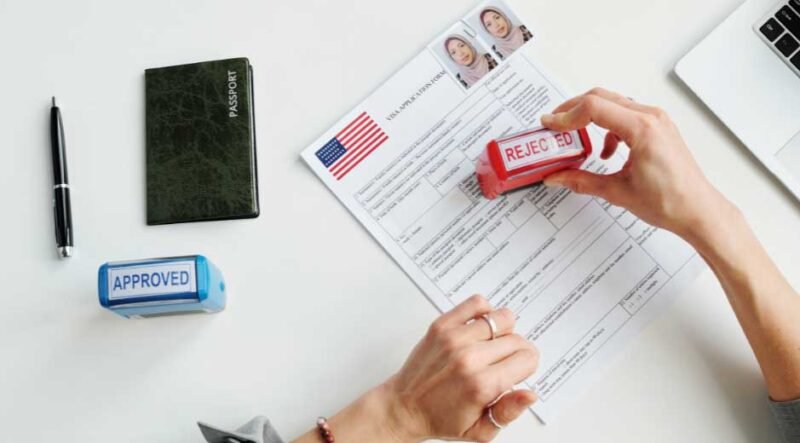Applying for a U.S. visa, green card, or naturalization is a big milestone for individuals and families. However, the process is complex, and U.S. Citizenship and Immigration Services (USCIS) carefully reviews every detail. Even small mistakes can result in a rejection or delay, forcing applicants to start over and extend the waiting period. Understanding the most common reasons USCIS rejects applications can help you avoid these pitfalls and give your case the best possible chance of success.
Missing or Incorrect Information on Forms
One of the top reasons USCIS applications are rejected is incomplete or inaccurate information. USCIS requires that every form be filled out completely and consistently. Common mistakes include:
- Leaving required fields blank instead of entering “N/A” or “None”
- Providing inconsistent dates for employment or residence history
- Misspelling names or using different variations across forms
- Incorrectly answering “Yes/No” questions related to eligibility or background
- Forgetting to sign and date the forms in the designated areas
These errors may seem small, but they raise red flags and can result in a quick rejection. Double-checking every detail before submission is critical.
Submitting Outdated Forms
USCIS frequently updates its forms, and using an outdated version can automatically lead to rejection. Each form has an edition date printed on it, and applicants must ensure they are using the most recent version from the USCIS website. Downloading forms from unofficial sources can be risky and may result in using outdated paperwork.
Missing Fees or Incorrect Payment
Another common reason for rejection is an incorrect or missing filing fee. USCIS has specific fee schedules that change periodically, and payment must be made in the exact amount listed in the official instructions. Common mistakes include:
- Using old fee amounts after changes have been announced
- Writing checks incorrectly (wrong payee, signature, or mismatched amount)
- Forgetting to include a check or money order at all
- Paying with unaccepted methods, such as cash
Because fees vary by form and applicant category, always verify the amount and accepted payment methods on the day of submission.
Lack of Supporting Evidence
Simply submitting the form is not enough. USCIS requires strong supporting evidence to prove eligibility. Applications are often rejected or delayed when applicants fail to provide:
- Proof of identity (passports, birth certificates, marriage certificates)
- Immigration history (I-94 records, visa stamps, prior approval notices)
- Financial support documents (tax returns, bank statements, pay stubs)
- Relationship evidence for family-based cases (photos, leases, joint bank accounts)
If documents are not in English, USCIS requires certified translations. Many applicants face rejection for submitting poor-quality or uncertified translations. Working with a professional translation agency – Kings of Translation ensures documents meet the required standards.
Missing Signatures
It may sound surprising, but one of the most frequent reasons for rejection is missing signatures. Every USCIS form specifies where applicants, sponsors, or preparers must sign and date. Submitting unsigned forms results in automatic rejection, regardless of how complete the rest of the application may be. Always verify that every signature field is completed before mailing.
Inconsistent or Conflicting Information
Even if all forms are filled in, USCIS carefully checks for consistency across applications. Inconsistencies such as different spellings of names, mismatched employment histories, or conflicting answers between forms can cause officers to doubt the credibility of the case. For example:
- Listing a different date of birth on your I-485 than on your I-130
- Claiming different employment periods across forms
- Using multiple variations of your legal name without explanation
Providing consistent information — and if necessary, adding an explanatory note for discrepancies — is essential to avoid rejections.
Incorrect Filing Location
Each USCIS form must be sent to a specific lockbox or service center depending on the applicant’s category and location. Submitting forms to the wrong address can delay processing or result in rejection. Because USCIS updates its filing addresses periodically, always confirm the correct mailing address on the official website before sending your packet.
Failure to Meet Deadlines
Immigration deadlines are strict. Late submissions of renewal or extension applications often result in rejection. This can have serious consequences, including losing lawful status. Applicants must track all important dates — visa expiration, biometrics appointments, and RFE deadlines — and submit responses or renewals well before the due date.
Insufficient Financial Documentation
For many visa categories, proving financial support is crucial. Applications are commonly rejected when affidavits of support are incomplete or when sponsors fail to demonstrate adequate income or assets. Mistakes include:
- Submitting outdated tax returns
- Leaving required sections of Form I-864 incomplete
- Not including joint sponsor documents when necessary
- Failing to show sufficient proof of assets when income is below requirements
Because USCIS is strict about financial eligibility, reviewing sponsor requirements in detail is essential.
Poorly Prepared Translations
When submitting foreign documents, USCIS requires certified English translations that include a translator’s statement of accuracy. Self-translations, informal translations, or missing certification statements are common reasons for rejection. To avoid this, applicants should only use professional certified translation services that guarantee compliance.
Final Tips to Avoid USCIS Rejections
Preventing mistakes takes time, but it is far easier than recovering from a rejection. Before mailing your application:
- Review the official USCIS checklist for your form type.
- Use the latest edition of every form.
- Confirm filing fees and payee details.
- Ensure all supporting evidence is included, labeled, and organized.
- Verify all signatures are in place.
- Double-check that translations are certified and accurate.
- Mail to the correct filing location using tracked delivery.
Conclusion
USCIS applications are rejected most often due to preventable errors — missing signatures, outdated forms, incorrect fees, insufficient evidence, or poor translations. By paying attention to these details and organizing your paperwork carefully, you can dramatically improve your chances of approval.
If your application requires translations, working with a trusted translation companies ensures your documents are accurate, properly certified, and ready to meet USCIS requirements. With the right preparation, your application stands a much stronger chance of moving through the process smoothly, saving you both time and stress.









